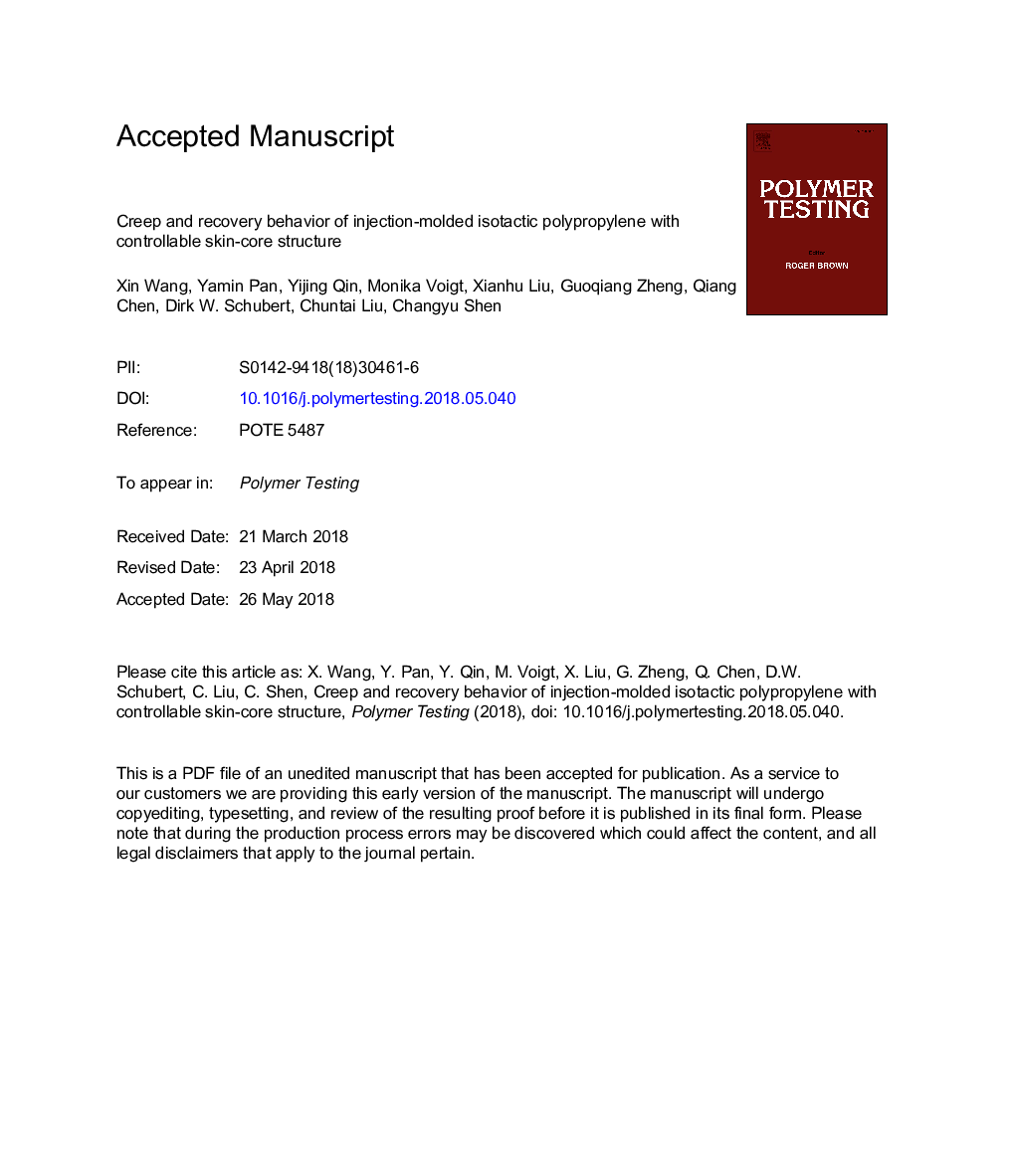| Article ID | Journal | Published Year | Pages | File Type |
|---|---|---|---|---|
| 7824842 | Polymer Testing | 2018 | 26 Pages |
Abstract
The creep behavior is one of the most important properties and should be characterized to evaluate long-term durability and reliability of polymeric materials. An alteration of the crystalline structure and morphology in the semicrystalline polymer leads to a change in the creep behavior as well. In this work, in order to understand the creep behavior of different morphologies, a modified injection molding technology with twice melt filling (M2) was used to prepare isotactic polypropylene (iPP) samples with controllable skin-core structure. The different shear layer thicknesses were obtained by adjusting the time intervals of the twice melt filling. Compared with the conventional injection-molded samples (M1), M2 samples present better efficiencies in reducing the creep and recovery response, and the response was strongly influenced by the shear layer thicknesses. For example, the thickness of skin layer of M2 sample with a time interval of 9â¯s increased approximately 42% and its creep deformation reduced to 52% at 80â¯Â°C. It was also found that the creep and recovery strain reduced with decreased temperature or with applied stress. In addition, several theoretical models were used to describe the creep and recovery behavior of M2 samples for a better understanding of the mechanisms.
Related Topics
Physical Sciences and Engineering
Chemistry
Organic Chemistry
Authors
Xin Wang, Yamin Pan, Yijing Qin, Monika Voigt, Xianhu Liu, Guoqiang Zheng, Qiang Chen, Dirk W. Schubert, Chuntai Liu, Changyu Shen,
